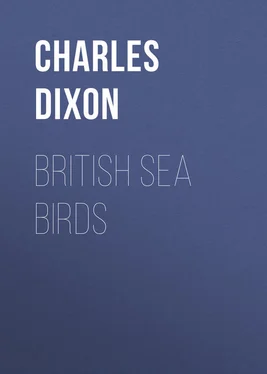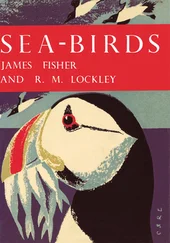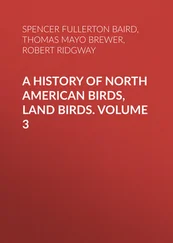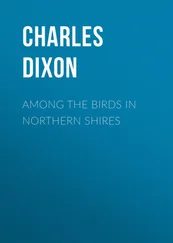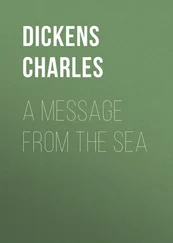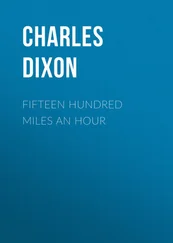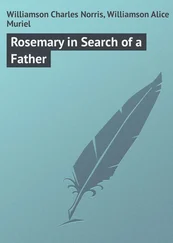Charles Dixon - British Sea Birds
Здесь есть возможность читать онлайн «Charles Dixon - British Sea Birds» — ознакомительный отрывок электронной книги совершенно бесплатно, а после прочтения отрывка купить полную версию. В некоторых случаях можно слушать аудио, скачать через торрент в формате fb2 и присутствует краткое содержание. Жанр: foreign_antique, foreign_prose, на английском языке. Описание произведения, (предисловие) а так же отзывы посетителей доступны на портале библиотеки ЛибКат.
- Название:British Sea Birds
- Автор:
- Жанр:
- Год:неизвестен
- ISBN:нет данных
- Рейтинг книги:3 / 5. Голосов: 1
-
Избранное:Добавить в избранное
- Отзывы:
-
Ваша оценка:
- 60
- 1
- 2
- 3
- 4
- 5
British Sea Birds: краткое содержание, описание и аннотация
Предлагаем к чтению аннотацию, описание, краткое содержание или предисловие (зависит от того, что написал сам автор книги «British Sea Birds»). Если вы не нашли необходимую информацию о книге — напишите в комментариях, мы постараемся отыскать её.
British Sea Birds — читать онлайн ознакомительный отрывок
Ниже представлен текст книги, разбитый по страницам. Система сохранения места последней прочитанной страницы, позволяет с удобством читать онлайн бесплатно книгу «British Sea Birds», без необходимости каждый раз заново искать на чём Вы остановились. Поставьте закладку, и сможете в любой момент перейти на страницу, на которой закончили чтение.
Интервал:
Закладка:
Charles Dixon
British Sea Birds
CHAPTER I.
GULLS AND TERNS
Amongst the many natural objects that confront the visitor to the sea, there are none more readily detected than birds. The wide waters of the ocean and its varied coast-line of cliff or sand, shingle or mud-flat, are the haunts of many birds of specialised type. Many of these birds are only found on or near the sea; they are as inseparably associated with it as the beautiful shells and seaweeds and anemones themselves. Some of these birds are common and widely distributed; others are scarce or local in their habitat; some frequent the shore, others the water; whilst many are equally at home on both. Again, many of them are migratory, or of wandering habits; some but summer visitors, others winter refugees. It matters little, however, what the season may be, for many interesting birds are sure to be met with by the sea; the wide waters and wet tide-swept shores are a perennial feeding place, and a safe and congenial refuge.
Of all the birds that haunt the sea and the shore, those of the Gull family are the best known. From whichever direction the sea is reached, almost invariably the first indication of its vicinity is a Gull, sailing along, it may be, in easy, careless flight, or wheeling and gliding high in air above the waste of restless waters. The Gull and its kindred then are inseparably associated in the minds of most people with the sea, and with them, therefore, it certainly seems most appropriate to commence our study of marine bird-life.
The Gull family is divided by many systematists into three fairly well-defined groups or sub-families, viz., the typical Gulls or Larinæ, the Skuas or Stercorariinæ, and the Terns or Sterninæ. The Skuas, however, are included with the typical Gulls by many naturalists, a proceeding for which much may be said, thus reducing the three sub-families to two. In their distribution the Gulls and Terns may almost be regarded as cosmopolitan, but the Skuas are chiefly boreal in their dispersal, four of the half dozen known species breeding in the Arctic Regions, and two others dwelling in the higher latitudes of the Southern Hemisphere. Some of the species are very widely distributed; the dispersal of others is just as remarkably restricted. For instance, the Glaucous Gull has a circumpolar habitat, and the Black-headed Gull ranges from the Faröe Islands to Japan; but, on the other hand, Larus fuliginosus is said to be peculiar to the Galapagos Islands and Larus bulleri to New Zealand. Three out of the four species of Arctic Skuas are circumpolar in their distribution; the fourth may possibly be so.
In adult plumage the Gulls are not remarkable for any great diversity of colour. French gray predominates upon the upper parts; the under parts are white, often suffused with a delicate rosy tint; the primaries are usually dark gray, brown, or black, in many species spotted and tipped with white. Some species assume (by a change of colour and not by a moult) a sooty-brown or black head or hood during the breeding season; Ross’s Gull dons a black narrow collar at that period. The wings are ample, long, and pointed; the tail is even, except in Ross’s Gull in which it is wedge-shaped, and in Sabine’s Gull in which it is forked. The legs are comparatively short, and the feet are webbed.
Gulls moult twice in the year. When first hatched young Gulls are covered with down. Young, in first plumage of the Black-headed group of Gulls, have the feathers of the mantle, the scapulars, and the innermost secondaries, brown with pale margins; the crown, nape, and ear-coverts brown; and the tail with a broad sub-terminal band of the same colour. The second plumage – assumed as soon as the foregoing is completed – retains brown marks of immaturity on the scapulars and innermost secondaries; the wing-coverts are streaked with brown, and the tail still retains its brown sub-terminal band. This plumage is carried until the following spring, when the brown hood – assumed for the first time – is mottled with white; the tail-band is more or less broken; whilst the scapulars and innermost secondaries assume the colour peculiar to the adult. For several years the white markings on the primaries gradually increase in extent until the bird arrives at perfect maturity. The larger Gulls – of which the Herring Gull may be taken as a typical species – mature much more slowly, the perfectly adult plumage not being assumed until the bird is four years old. The plumage succeeding the downy stage is brown on the upper parts, each feather with a pale margin, and white on the under parts streaked with brown. After each succeeding moult in spring and autumn, the traces of immaturity grow less, the wing-coverts and tail retaining them longest. The white spots on the primaries are the latest signs of complete maturity. The colour of the feet, bill, iris, and irides, slowly changes until that characteristic of the adult is assumed.
Gulls, popularly speaking, are inseparably associated with the sea, yet the haunts of many species, especially during the breeding season, are by no means exclusively marine ones. Almost every kind of coast is frequented by these birds – rocky headlands, precipitous downs, sandy dunes, mud-flats or slob-lands, and marshes; whilst every harbour round the shore of our islands is periodically visited. Gulls are not very pronounced migrants. They wander about a good deal during the non-breeding season, and many Arctic species draw southwards during winter, but all the indigenous British forms are residents on and off the coasts throughout the year. With these few words of introduction we will now proceed to give a more detailed account of the strictly British species.
This, the largest of the Gulls, and scientifically known as Larus marinus , is one of the least common British species, most locally distributed during the breeding season. It is not known to breed anywhere on the east coast of England, and but very locally on the south coast, in Dorset. It becomes more numerous in the wilder districts, in Cornwall, the Scilly Islands, and Lundy, and thence locally along the Welsh coast and in the Solway district. In Scotland it becomes more common, especially among the islands of the west coast, including St. Kilda, and on the north coast to the Orkneys and Shetlands. It is also widely distributed in Ireland, but there, as everywhere else, extremely local, and nowhere, comparatively speaking, numerous. During the non-breeding season it wanders more, and is then seen at many places along the coast. I have seen as many as fifty of these fine birds in Tor Bay, after heavy gales from the eastward. Montagu asserts that this Gull is locally known as a “Cob,” but the term is of pretty general application to the larger Gulls, and, so far as I can learn, has no distinctive significance. In St. Kilda, where I had many opportunities of studying the habits of this Gull, it is regarded with hatred by the natives, owing to its depredations amongst the eggs of the other sea-fowl. In this island it is universally known by the name of “Farspach.” No Gull is more wary, and yet on occasion none are bolder and more daring. I have seen a bird of this species tear to pieces a Puffin I had shot as it floated upon the sea, and that in spite of several shots I had at it with a rifle. It is a sad robber of the other and more weakly Gulls, not only pillaging their nests at every opportunity, but chasing them, and making them relinquish bits of food they may chance to pick up within view. Like the Raven and the Crow, it seems fully conscious of its marauding misdeeds, and correspondingly artful, as if always instinctively fearing that treatment it metes out so lavishly to creatures more helpless than itself.
Читать дальшеИнтервал:
Закладка:
Похожие книги на «British Sea Birds»
Представляем Вашему вниманию похожие книги на «British Sea Birds» списком для выбора. Мы отобрали схожую по названию и смыслу литературу в надежде предоставить читателям больше вариантов отыскать новые, интересные, ещё непрочитанные произведения.
Обсуждение, отзывы о книге «British Sea Birds» и просто собственные мнения читателей. Оставьте ваши комментарии, напишите, что Вы думаете о произведении, его смысле или главных героях. Укажите что конкретно понравилось, а что нет, и почему Вы так считаете.
